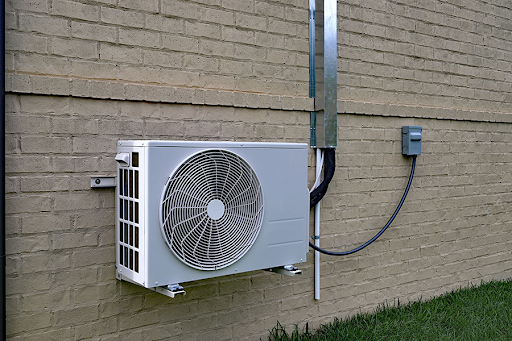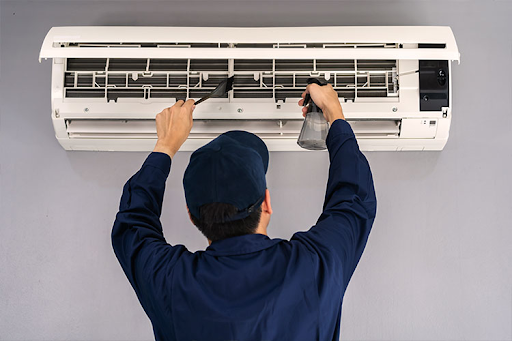
In every home, the HVAC (Heating, Ventilation, and Air Conditioning) system plays a crucial role in maintaining comfort throughout the year. However, HVAC units can sometimes be noisy, disrupting peaceful environments and affecting overall comfort. Whether you're dealing with a noisy HVAC system or aiming to prevent noise issues in a new installation, soundproofing your HVAC system and opting for heating and cooling repair can significantly improve your living space. This blog explores effective strategies and techniques to soundproof your HVAC system, ensuring quieter operation and enhanced comfort for you and your family.
Understanding HVAC Noise Issues
HVAC systems can generate noise through various mechanisms, including air movement, equipment vibration, and mechanical operations like compressors and fans. This noise can range from subtle hums to disruptive rattles, impacting different areas of your home. Common sources of HVAC noise include:
Airflow and Ductwork: Air rushing through ducts and vents can create turbulence and noise.
Mechanical Components: Motors, compressors, and fans produce operational noise during heating or cooling cycles.
Vibration and Resonance: HVAC equipment can vibrate against surfaces, amplifying sound through walls and floors.
Benefits of Soundproofing Your HVAC System
Noise Reduction: Minimize disruptive HVAC noise, promoting a quieter and more comfortable living environment.
Improved Sleep Quality: Reduce nighttime noise disturbances, enhancing sleep quality and relaxation.
Enhanced Energy Efficiency: Properly insulated HVAC systems can improve energy efficiency by reducing heat loss and ensuring optimal airflow.
Effective Techniques for Soundproofing Your HVAC System
Let's talk about how to soundproof your HVAC system: -
1. Insulate Air Ducts:
Materials: Use acoustic insulation materials like foam board, fiberglass, or specially designed duct liners to reduce noise transmission through ductwork.
Seal Gaps: Seal joints and connections with mastic sealant or metallic tape to prevent air leaks and further reduce noise.
2. Install Sound Dampening Pads:
Location: Place sound-dampening pads or vibration isolation mounts under HVAC equipment such as compressors and air handlers to minimize vibration transfer to building structures.
Materials: Choose anti-vibration pads made from rubber or neoprene for effective sound absorption.
3. Build Sound Barriers:
Enclosures: Construct soundproof enclosures around noisy HVAC components, such as compressors or outdoor units, using sound-absorbing materials like mass-loaded vinyl or acoustic foam panels.
Barriers: Install sound barrier walls or partitions between mechanical rooms and living spaces to block noise transmission.
4. Use Quiet HVAC Equipment:
Selection: When upgrading or replacing HVAC systems, opt for models specifically designed for quiet operation.
Technology: Choose units with advanced noise-reducing features like variable-speed motors or insulated compressor compartments.
5. Address Structural Weak Points:
To enhance soundproofing in your home, consider several effective strategies. Begin by insulating walls and floors adjacent to HVAC equipment to minimize sound transmission. This can involve adding soundproofing materials like insulation batts or foam boards to these areas.
Upgrade windows and doors with double-pane glass and robust weatherstripping to reduce exterior noise infiltration. Double-pane windows create an additional barrier against outside noise, while weatherstripping seals gaps around doors and windows that can allow noise to enter.
Additionally, consider installing heavy curtains or acoustic panels on walls facing noisy areas to further absorb sound waves. These materials help dampen noise and improve overall sound insulation in your home.
By implementing these strategies, you can significantly reduce unwanted noise from both internal sources like HVAC systems and external sources such as traffic or neighborhood noise, creating a quieter and more comfortable living environment.
DIY vs. Professional Assistance
DIY Projects: Some soundproofing tasks, such as sealing ducts or installing foam insulation, can be tackled as DIY projects with basic tools and materials.
Professional Services: For complex installations or comprehensive soundproofing solutions, consult HVAC contractors or acoustic specialists who can provide tailored recommendations and ensure effective noise reduction.
Conclusion
Soundproofing your HVAC system and opting for heating and cooling repair is a worthwhile investment in enhancing indoor comfort and reducing noise disturbances. By implementing these effective techniques—from insulating air ducts and using sound-dampening pads to selecting quiet HVAC equipment and addressing structural weaknesses—you can create a quieter and more peaceful home environment. Whether you're retrofitting existing HVAC systems or planning new installations, prioritize soundproofing strategies to optimize comfort and enjoyment throughout your living spaces. Embrace the benefits of a quieter HVAC system and enjoy improved sleep quality, enhanced energy efficiency, and a more serene home atmosphere.




Write a comment ...